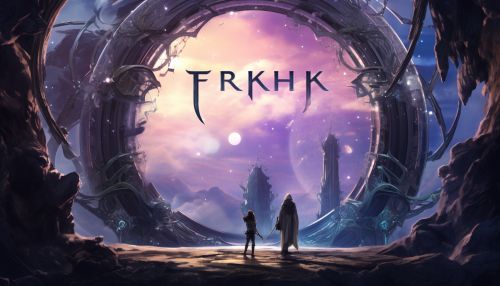Science fantasy
Definition and Overview
Science fantasy is a subgenre of speculative fiction, typically characterized by a blend of science fiction and fantasy elements. This genre often incorporates elements of both hard science and magic, allowing for a broad range of narrative possibilities. It is often distinguished from pure science fiction by the inclusion of fantastical elements, such as magic or mythical creatures, and from pure fantasy by the inclusion of scientific or technological elements, such as space travel or advanced technology.
History
The origins of science fantasy can be traced back to the early 20th century, when authors began to experiment with blending elements of science fiction and fantasy. One of the earliest examples of this genre is the John Carter of Mars series by Edgar Rice Burroughs, which combines elements of science fiction (such as alien civilizations and advanced technology) with elements of fantasy (such as telepathy and immortality).
In the mid-20th century, the science fantasy genre gained popularity with the publication of works such as A Wrinkle in Time by Madeleine L'Engle and the Darkover series by Marion Zimmer Bradley. These works often incorporated elements of both science fiction and fantasy, creating a unique blend of the two genres.


Characteristics
Science fantasy stories typically incorporate elements of both science fiction and fantasy. This can include, but is not limited to, the use of advanced technology, alien civilizations, space travel, time travel, parallel universes, and magic or supernatural powers.
The science in science fantasy is often speculative or theoretical, rather than based on established scientific principles. This allows authors to explore concepts and ideas that would not be possible in a strictly science fiction or fantasy setting.
The fantasy elements in science fantasy often serve to add a sense of wonder and mystery to the story. This can include the use of magic, mythical creatures, and fantastical settings.
Subgenres
There are several subgenres within science fantasy, each with its own unique characteristics. These include:
- Planetary romance: This subgenre typically involves stories set on other planets, often with a romantic or adventurous plot. Examples include the John Carter of Mars series by Edgar Rice Burroughs and the Darkover series by Marion Zimmer Bradley.
- Dying Earth: This subgenre involves stories set in the far future, often on a dying or post-apocalyptic Earth. Examples include The Dying Earth series by Jack Vance and the Book of the New Sun series by Gene Wolfe.
- Sword and planet: This subgenre involves stories that combine elements of sword and sorcery fantasy with science fiction, often involving a protagonist from Earth who becomes involved in adventures on another planet. Examples include the Barsoom series by Edgar Rice Burroughs and the Gor series by John Norman.
Notable Works and Authors
There have been many notable works and authors in the science fantasy genre. Some of the most influential include:
- Edgar Rice Burroughs: Known for his John Carter of Mars series, Burroughs was one of the pioneers of the science fantasy genre.
- Madeleine L'Engle: Her novel A Wrinkle in Time is a classic example of science fantasy, combining elements of science fiction (such as tesseracts and time travel) with elements of fantasy (such as witches and mythical creatures).
- Marion Zimmer Bradley: Her Darkover series is a classic example of science fantasy, combining elements of science fiction (such as advanced technology and alien civilizations) with elements of fantasy (such as telepathy and magic).
Influence and Impact
The science fantasy genre has had a significant influence on popular culture, particularly in film and television. Many popular franchises, such as Star Wars and Doctor Who, incorporate elements of both science fiction and fantasy, creating a unique blend of the two genres.
The genre has also had a significant impact on literature, influencing a wide range of authors and works. It has also been a source of inspiration for many artists, illustrators, and game designers.
